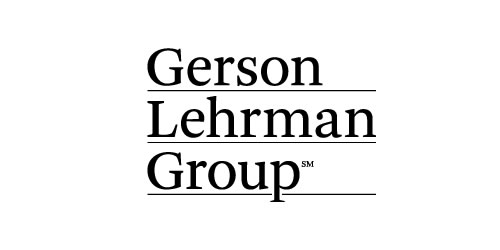AGD 2013: Towards a New Global Economy: What Next for Jobs, Opportunity and Growth?
AsiaGlobal Dialogue 2013 was held on December 5 and 6, 2013 in Hong Kong. More than 400 international participants from a broad range of sectors within Asia and beyond took part in the conference. Participants explored a variety of subjects including what business and policy makers should do to drive future growth and how regulators can better recognize risk factors in lending.
Distinguished speakers at the event include Bank of Israel Governor Stanley Fischer, Former IBM Chairman Sam Palmisano, HSBC Group Chief Executive Stuart Gulliver, SEB Chairman Marcus Wallenberg, AIA Group Chief Executive and President Mark Tucker.
Videos
Highlights
-
Welcoming Address
-
Re-thinking Growth – Are Business and Policy in Step?
-
Can a Global Architecture Work for Finance and How Relevant is this to the New Problems We May Face?
-
Asia’s Financial Markets – In Search of a Better Regulatory Model?
-
Asia’s Re-balancing Act: An Opportunity for Global Business
-
Innovation and Business Opportunity – Can Asia Lead?
-
Boosting Trade in a Global Economy – Can Multilateralism Win the Day?
-
What Matters Most for a Sustainable Asia?
-
Evolving Growth Models
-
Asia’s Sustainable Development
-
Asia Finance 2020
-
Global Value Chains
-
Long Term Global Investment – A Changing Role for Families?
-
From Snake to Horse – Saddling Up for 2014
-
Partnerships for the Future of Sustainable Growth
-
In Conversation with Marcus Wallenberg
Welcoming Address
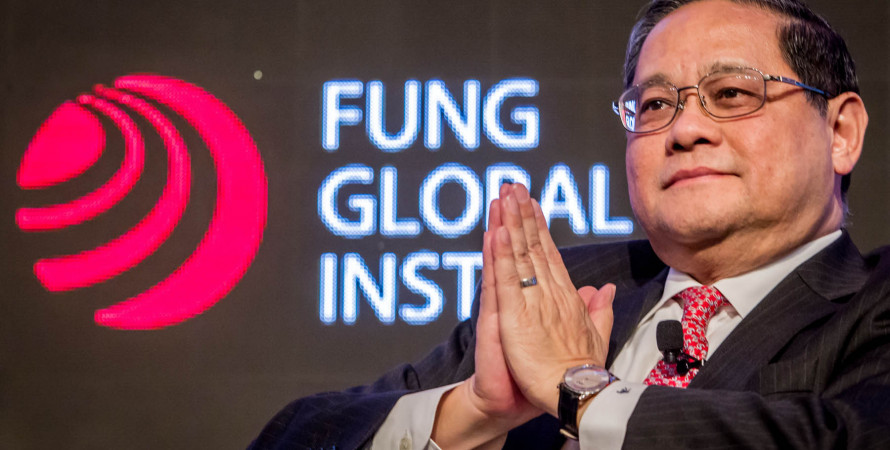 Victor K Fung
Victor K Fung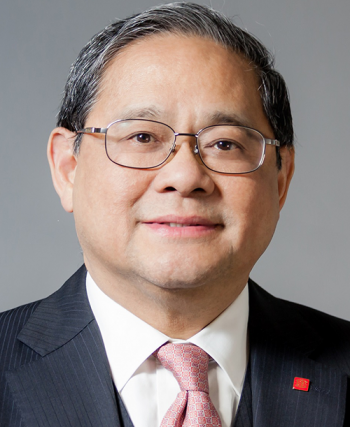
Victor K Fung
Chairman, Asia Global Institute"....Asia needs to re-think traditional approaches to growth, employment and sustainability, given the combined impacts of re-balancing, changing demographics, urbanization and environmental stresses. We attempt to bring Asian perspectives – in the plural – to bear on global issues ever mindful that there is no single perspective in a region as diverse as Asia. Equally, Asia benefits greatly from having access to global perspectives, such as those represented by the distinguished overseas speakers and participants at this Dialogue."
Founding Chairman Victor K. Fung set the stage by referring to four recent, defining events whose significance went to the heart of the Fung Global Institute’s four research themes and the AGD 2013 agenda
- First, was November’s landmark meeting of the Communist Party of China which set the nation’s policy direction for the next decade. In particular, it unveiled far-reaching economic reforms which recognized the decisive role of the market in allocating resources. This resonated strongly with the findings of a Fung Global Institute study into the Pearl River Delta city of Foshan. The prospect of the market playing a bigger role in China’s evolving growth model has exciting implications, not just for China but for all who want to do business there.
- Second, was the surprise decision by the U.S. Federal Reserve last September to leave its Quantitative Easing program unchanged for the time being (note: a stance since reversed). It begged the bigger question of how long a global financial architecture so dependent on massive quantitative easing, long debt and short equity could prevail. In this context, the Fung Global Institute was asking: How would an Asian financial architecture be different? And where should Asia look for inspiration and models?
- Third, were the annual United Nations climate talks in pursuit of a new international agreement on climate change. These once again highlighted why Asia needs “a new industrial revolution” to become environmentally sustainable. At the same time, it is crucial for business to take on board the idea that sustainability is about people and societies as well as the environment.
- The fourth event was the World Trade Organization’s ninth ministerial conference in Bali, which was in high gear as AGD 2013 got underway. Victor Fung had just led an international business delegation to Bali to convey to trade ministers that the possibility of sealing a WTO deal on trade facilitation was an opportunity too great to miss. It could be a significant contributor to job creation and poverty reduction in the developing world, and would place the multilateral system back at the centre of global progress on trade, growth and job creation.
Re-thinking Growth – Are Business and Policy in Step?
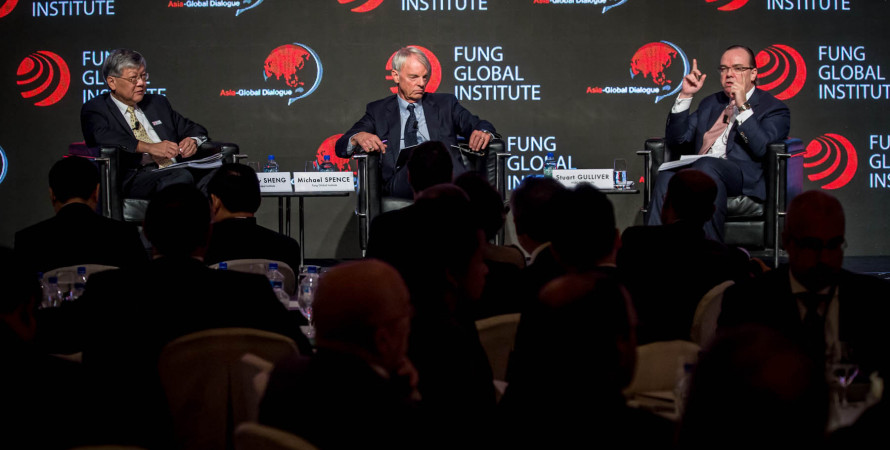 Stuart Gulliver
Stuart Gulliver
Stuart Gulliver
Group Chief Executive, HSBC Holdings plc Chairman, The Hongkong and Shanghai Banking Corporation Ltd.
Michael Spence
Michael Spence
Nobel Laureate Chairman, Advisory Board, Asia Global Institute“Growth is about jobs and it has been proven by a number of studies that, actually, trade increases jobs throughout the world.”
"Growth is coming back slowly but employment is coming back more slowly...There may be a powerful trend that affects us long term, and that is that technology - in a variety of different forms - is busy taking out what are called "routine jobs", both white and blue collar... I believe these forces will start to show up relatively soon in developing economies in the middle income transition."
Opening Dialogue: Panelists explored what business and policy makers should do to drive future growth
- China and the rest of Asia have managed the post-recession transition quite well. Economic growth has also resumed in the United States, although at a modest 1.5 - 2 per cent. Unemployment, especially among youth, has risen in Western economies, whereas in Asia wages have risen out of balance.
- In the coming years, emerging markets will power global growth. Any deal at the World Trade Organization talks (in Bali) will take us part of the way to good growth because trade increases jobs – local jobs. With new jobs being created in the services sector – particularly education and healthcare – more trade in services would be welcome.
- Asia’s demographic bounty – predominantly the region’s young, working-age population – could disappear if scarce water and other natural resources are not judiciously used. Sustainable development requires enlightened policies.
- Small and medium-sized enterprises (SME) create the most jobs. However, as these SMEs become more efficient and automated their capacity to create more jobs diminishes.
- The recent Third Plenum of the Chinese Communist Party laid the foundation for economic and financial reforms to strengthen a market-based economy. China is playing a major economic role in the world, but that is not yet matched by the (less significant) role it plays in the global financial system. The latest banking reforms in India have also been marketfriendly, permitting greater participation of local and foreign banks in its economy.
- There is no effective global financial regulation. Regulators in Washington and London reacted to their national situations during the financial crisis, and developing countries were forced to take their own, divergent, defensive measures. Official measures such as quantitative easing to cope with the crisis have also affected different citizens and institutions differently. Those who had invested in stocks and bonds benefited from bailouts, but non-investors fared badly.
- As a result of the latest crisis, there are likely to be fewer global banks: Perhaps five or so, as against 20 or 30 in recent years. As a result, bank finance is becoming increasingly local while corporations are going global.
- In the current situation, China wants the Renminbi to keep appreciating. It could become the second or third most-used currency, although not a significantly-traded one.
- Business should not forget long-term sustainability and environmental concerns. Governments and business leaders must co-operate in policy formation to boost growth.
- For development to be sustainable over the long run, the process must nurture social cohesion. To maintain social cohesion, re-training of the existing workforce and training entrants into the job market are vital.
Can a Global Architecture Work for Finance and How Relevant is this to the New Problems We May Face?
 Stanley Fischer
Stanley Fischer
Stanley Fischer
Former Governor, Bank of Israel“If emerging countries want a greater say in the global economy, they must contribute ideas and proposals on how to improve the system…. Answering the question, “Can a Global Architecture Work for Finance?” I would like to answer upfront: Of course not. Countries are far too diverse for ‘one-size-fits-all’. But there’s another equally valid answer: Of course we must have a structure for international financial transactions that can accommodate the diverse needs of different countries from the most advanced … to those that are already on the path towards being highly developed as emerging countries, and to those struggling to find their way to that path.”
Keynote Address: Stanley Fischer discussed post-crisis financial reforms
- The global financial crisis was caused not just by a failure of banks but also by a failure of supervision. Yet not much has been done thus far to improve that supervision.
- The recession exposed the fragility of both national and international financial systems, because these are built on trust and on judgments about what will happen in the future.
- The Financial Stability Board and the Basel Committee on Banking Supervision are trying to buttress and strengthen the international system by increasing capital requirements and changing bank collateral rules.
- The efficient allocation of capital by international banks means they can move money around when a crisis occurs but, as the crisis begins, this is not helpful for the countries from which the cash is being removed. A proposed solution is “subsidiarization” rather than branch banking, and the world is moving in that direction.
- Short-term capital flows are an unsolved problem. Large countries have strong enough markets to withstand the affects of capital flows, but small economies are heavily affected.
- SME financing is very difficult to carry out. It requires local knowledge of the business and the borrower, so it is not well suited for big global banks.
- Financial systems must be made as safe as possible. The Basel Committee is working on resolution mechanisms but we would not know whether systems will work until they have stressed tests – but stress tests of reality and not those on paper.
Asia’s Financial Markets – In Search of a Better Regulatory Model?
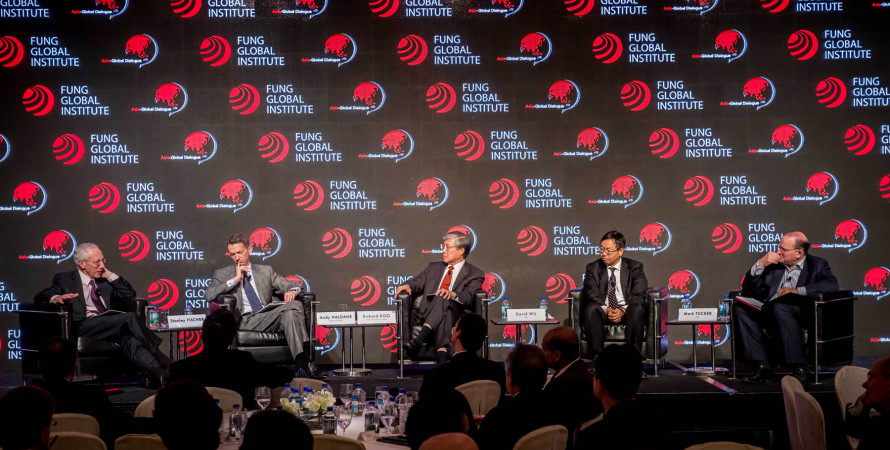 Stanley Fischer
Stanley Fischer
Stanley Fischer
Former Governor, Bank of Israel
Andy Haldane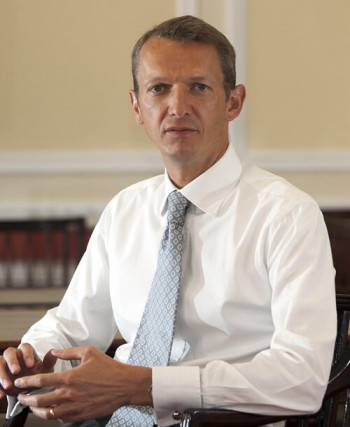
Andy Haldane
Executive Director for Financial Stability Bank of England
Richard Koo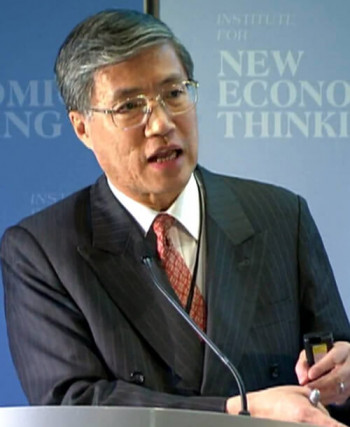
Richard Koo
Chief Economist, Nomura Research Institute
David Wu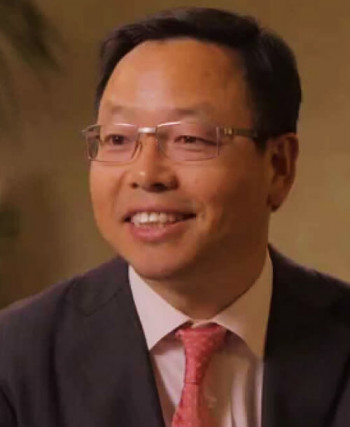
David Wu
China Government and Regulatory Affairs Lead Partner, PwC“When you have a banking crisis as in 2008, it’s not because Lehman Brothers was big but that everyone else had the same problem ... I really wish that, given what we went through, Asian banking authorities will put in measures in very clear terms so that if things happen where all banks have the same problems at the same time they know exactly what powers they do have, so that markets are assured.”
“Did the Chinese banks emerge from the crisis relatively unscathed due to skill or luck or circumstances? I would argue it was because of luck – luck, because the government had just completed the clean-up of the balance sheets of the banks, luck because we have not yet complex financial instruments … luck because our banking system is totally cut off from the global markets.”
Plenary Dialogue: Panelists discussed how regulators can better recognize risk factors in lending and how to balance regulation with the welfare of the wider economy
- Over the past five, 10 or 20 years, the world experienced a number of financial crises during which Asia mainly punched below its weight. Because Asia had already experienced its own financial crisis (at the end of the 1990s), key reforms had been embedded in the Asian financial system. Having some “insurance” in place contributed to the better performance of Asian economies.
- During the Latin American banking crisis of the 1990s, all the banks had the same problem at the same time. This was also true of the global financial crisis of 2008. If you have a systemic banking crisis, you have to go slowly in order to save the entire system; you have to propose a speed limit in writing off loans.
- In the early part of the past decade, Chinese banks were in trouble and global institutions helped them find a solution. Chinese banks cashed out non-performing loans, then recapitalized. US$45 billion was injected into those banks and all problem assets were carved out. They made a determined effort to clean the balance sheets. You can see clearly that after the reform, the balance sheets were clean, but the solution to credit risk on the part of the banks was that the risk was actually transmitted to the government.
- The government is not smarter than the market. The government has to ensure that capital is available. The risk-taking cycle is every bit as regular as the business cycle, except that the cost is much greater, and we cannot afford benign neglect. The financial cycle needs to be managed proactively by regulators. It is not enough to mop up after the flood because the flood will drown you.
- While the government may not be smarter than the market, markets sometimes do irrational things. The search for a better regulatory framework must balance those two issues.
- Given Asia’s burgeoning economies, it is crucial that regulators recognize the risk from over-regulation. There needs to be a recognition that the financial sector exists as a component of the wider economy rather than as an end within itself. Regulators must recognize the risk factors in lending within the financial sector and consider the negative externalities of such lending versus the positive externalities of SME lending, infrastructure and trade finance.
- Lessons from past crises indicate that regulators were unsure of the powers they had – or did not have – when the crisis struck. They must have the regulatory authority to overrule banks’ errant decisions.
- Regulation, especially in Asia, where many markets are just beginning to formalize the rules that govern them, has to take into consideration the need for both the “brakes” and the “throttle”.
Asia’s Re-balancing Act: An Opportunity for Global Business
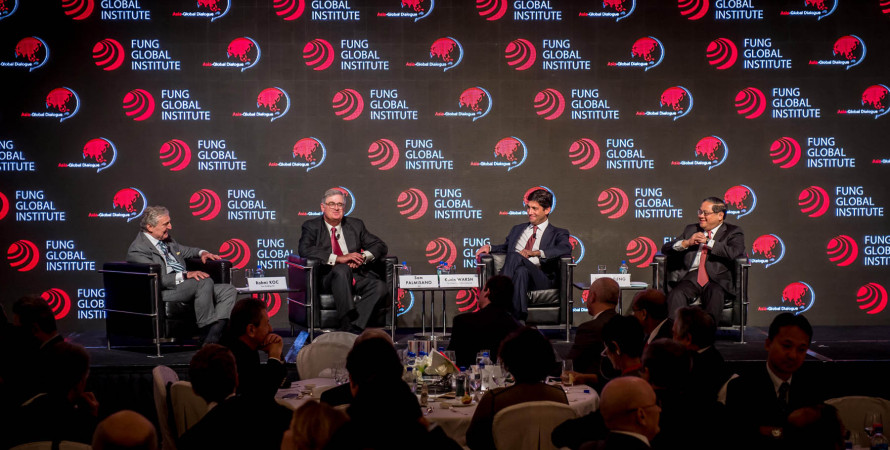 Rahimi Koc
Rahimi Koc
Rahimi Koc
Honorary Chairman and Member of the Board of Directors, Koç Holding A.Ş.
Samuel Palmisano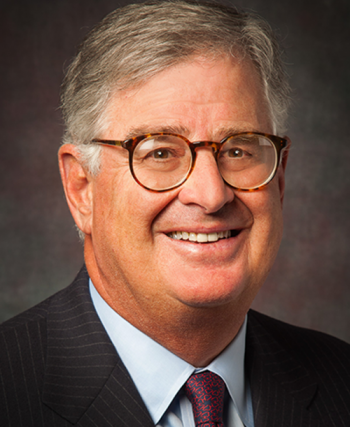
Samuel Palmisano
Chairman, The Center for Global Enterprise
Kevin Warsh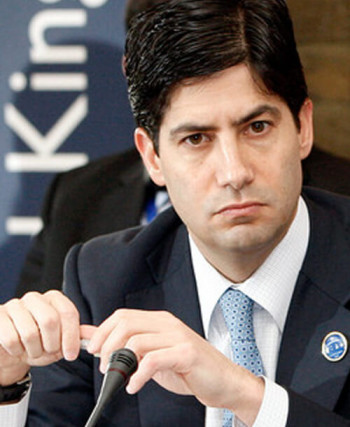
Kevin Warsh
Board Director, The Center for Global Enterprise“We need to harmonize discords in the complex process of global integration. If we fail, none of us will hear the music of the global orchestra, as everyone will revert to playing their own tunes on their own national instruments.”
“If you were to lay out centers that create opportunities for entrepreneurs to take risk capital to invest and create new businesses, and all these businesses are inherently scalable, they could be global on ‘day one’.”
Keynote Lunch Dialogue: Five years into the global recovery, every region faces its own challenges in returning to balance. This Lunch Dialogue focused on key global trends with particular relevance to Asia
- The re-balancing of the world economy is more challenging today. The United States must move its political discussion out of deadlock, the EU cannot (but must) manage the Euro, China must transition to a new economic model. All these tasks present challenges to their populations and established interests, but these must be overcome if global prosperity is to continue.
- To a certain degree, there is a race between the West (Europe and the U.S.), which must reform social systems, and China, which must find a new economic model to transition into an advanced economy: In other words, structural overhangs in the West versus the middle-income trap in the East.
- It is a mistake to believe central banks can continue to pull rabbits out of the hat. Business leaders and policymakers must be sure that macro-economic policies designed to buy time for the economy to re-balance are not instead shrinking it.
- Central bankers will soon be back to their proper role – behind the scenes. The market’s preoccupation with the U.S. Federal Reserve and financial supervision is misplaced, and belongs instead on the micro-foundations of the economy. If the next 10 years provide success stories for the global economy, it would not be because central bankers administered just the right medicine in just the right ways. While macroeconomic policies matter, there is a need to put the focus back on business leaders and entrepreneurs.
- In an integrated world, barriers and borders are dissolving. Business leaders need to keep these lessons in mind: There is no off-shoring when there is no “shore”; there is no outsourcing when there is no “out.” These ideas begin to lose their meaning as the world continues to integrate.
- Technology continues to disrupt established economies. Countries can either equip their citizens with the training to exploit innovations or try in vain to hold back the development of new systems by rolling back globalization and erecting more barriers. There are a slew of new jobs, but perhaps a mismatch of the skills needed to fill them.
- Banks, capital flows and trade flows are going back where these financial institutions (and their operations) found themselves some years ago.
- Countries and markets are better served by shifting their focus below the macroeconomic surface, to look at the developments taking place in many individual companies and municipalities, and focus on how they can take advantage of a global economy with high expectations and low barriers to entry.
Innovation and Business Opportunity – Can Asia Lead?
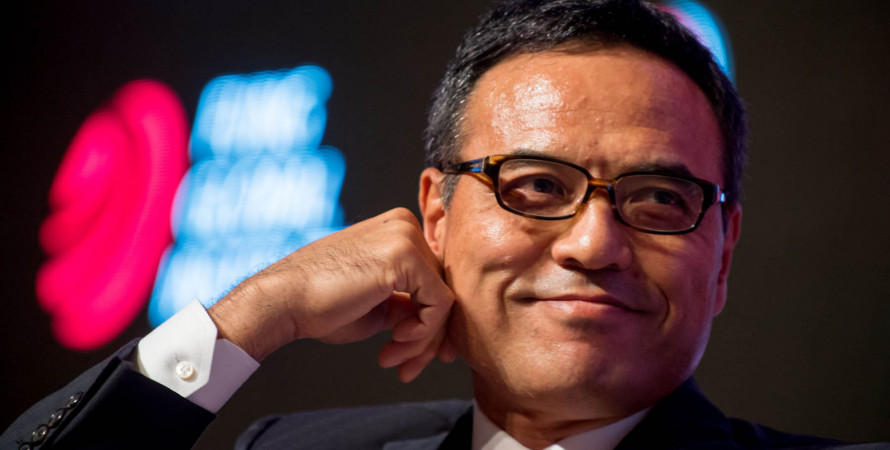 John Rice
John Rice
John Rice
Vice Chairman, GE
Takeshi Niinami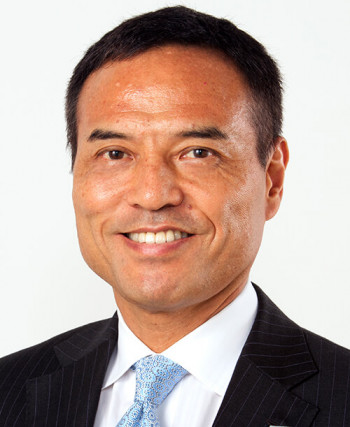
Takeshi Niinami
Chief Executive Officer, Suntory Holdings Limited“The point about Asian innovation is, I think, that we live in a world where globalization transcends borders. There is not one product introduced by our company in the past 10 years that has been based on the work done in just one country. So it’s not about China innovation or Asian innovation: It’s about how people are connected with the rest of the world.”
“I have been asked if Asia can lead in innovation. Frankly, I have no doubt. One thing we all share probably if we lead a company is that innovation is at the top of our agenda. If there is one thing that keeps me awake at night, it’s a question of ‘too much’ or ‘too little’ innovation, and where do we bet our money…”
This Plenary Dialogue discussed whether Asia can take the lead in global innovation:
- Large-scale urbanization and a rapidly aging population are two of the basic features of Asian societies today. If Asia can meet these vital social challenges, it can lead in innovation.
Issues such as community high-rise housing, healthcare and mass transportation require innovative solutions. Asia must aim to create an urban operating system for living in the 21st century. Leading nations such as China, Japan and South Korea share similar urban characteristics and should cooperate to achieve the most innovative results. - For innovation to succeed, there needs to be decentralization of social and political systems. In Asia, education needs to emphasize creative thinking rather than rote learning. To nurture innovation, Asia must rigorously abide by rules for protecting intellectual property rights.
- Innovation is global and respects no geographic boundaries. A century ago, General Electric had one research lab; today it has five main labs, with dozens of smaller ones spread across the world. In those days it made electrical machinery; now 80 per cent. of GE’s work is in services innovation – in line with the global trend in services’ dominance of the economy.
- In spite of national rivalries, business and political leaders must cooperate in research and innovation.
- Large-scale urbanization and a rapidly aging population are two of the basic features of Asian societies today. If Asia can meet these vital social challenges, it can lead in innovation.
Boosting Trade in a Global Economy – Can Multilateralism Win the Day?
 Victor K Fung
Victor K Fung
Victor K Fung
Chairman, Asia Global Institute
Yafei He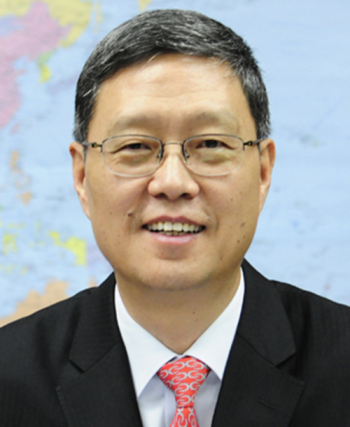
Yafei He
Distinguished Professor, Yenching Academy of Peking University
Takeshi Niinami
Takeshi Niinami
Chief Executive Officer, Suntory Holdings Limited“Multilateralism has lifted hundreds of millions out of poverty and created dramatic improvements in incomes. We need to improve the system rather than criticize it. If we replace multilateralism with competing blocs among the rich and powerful nations, what will happen to the smaller economies? It will create an economic underclass, and how will that affect global prosperity?”
“What really matters for the future is addressing measures, the purpose of which is not to protect the producer but to protect the consumer – norms, standards regulations, certification processors, authorization processors for medicines, safety of foods, safety of lighters, safety of toys – which is a totally different game because the purpose of the game is not to get rid of the measures..(but) the differences between the measures – getting rid of regulatory discrepancies, which is a formidably complex issue.”
Plenary Dialogue: With the multilateral system seemingly unable to deliver much progress on further trade liberalization, this Plenary Dialogue discussed whether “mega” preferential trading agreements being negotiated outside of the WTO are the right way forward
- The picture of multilateralism today is murky. The WTO can still lead and draw members together. Regional agreements can go only so far; there will be overlaps, and if they collide, then we will have to adapt.
- Getting rid of regulatory discrepancies is a complex issue. Should it be governments, regulators or businesses that decide on the measures and enforcement? This is the future game that business needs to look at.
- Previously, if you were a trade politician, the consumer was on your side and the producers against you. In the new game, the producer is on your side and the consumer thinks that opening trade leads to lowering precautions over matters he or she cares about. This is the big picture we need to think about.
- For trade to work and produce welfare effects, governments cannot consider trade policies in isolation. There has to be linkage between domestic policies, such as social safety nets, and trade policies.
- The Trans-Pacific Partnership (TPP), Transatlantic Trade and Investment Partnership (TTIP) and Trade in Services Agreement (TISA) give the uneasy feeling that the countries pushing for these negotiations have given up on the WTO. Moreover, is it coincidence or intentional that China is excluded from them all? Geo-economics is being mixed up with geopolitics?
- The real question is: Will these mega deals converge on some multilateral level and open up global trade? Japan is in four of the five agreements, so it has a big responsibility. It will become the coherence hub on trade in the next five to ten years – even though Washington, Brussels and Beijing may not like it.
- Japan does not deny multilateralism. With WTO talks previously being stalled, Japan took a regional approach and joined the TPP so that the government can start to reform Japan’s industries and reinvigorate the economy. Japan is looking to R&D and intellectual property as future exports to member countries.
- Being member to these mega trade deals, Japan can become a mediator between larger and smaller economies, and perhaps play a role in separating geopolitics from trade issues.
- We need to update the WTO system rather than reject it, because global trade still requires an organization that can oversee coherence in differing trade agreements.
- Multilateralism will survive. However, global trade today is a new and very different game about the convergence of regulations in the different countries making up the global supply chain. The stakeholders are changing, consumers are finding a more active voice, and alliances among the stakeholders are shifting. At the end of the day, mega preferential trading agreements are built upon the bedrock of multilateralism, and that should not be taken for granted.
What Matters Most for a Sustainable Asia?
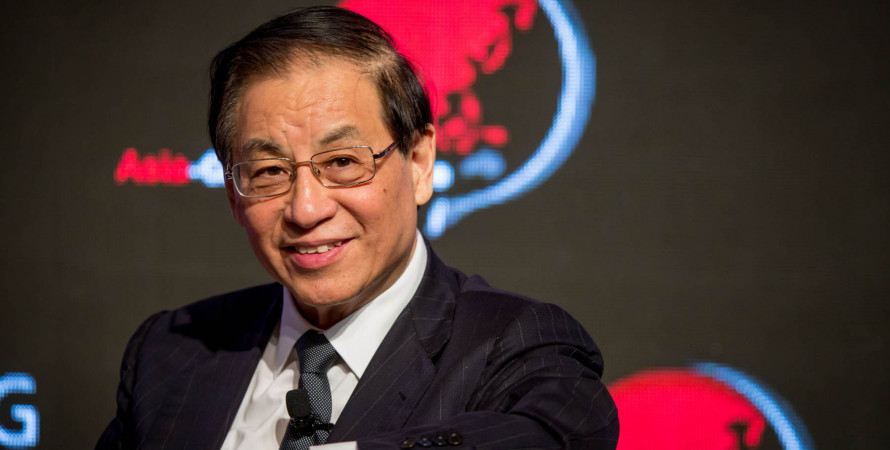 Edwin Lim
Edwin Lim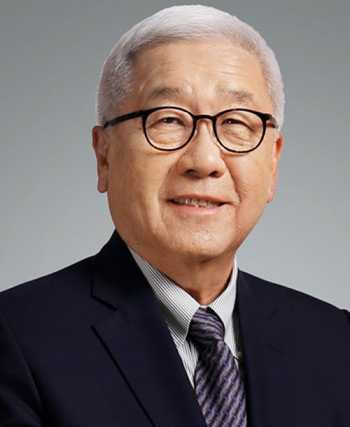
Edwin Lim
Co-Director, China Economic Research and Advisory Programme
Mingkang Liu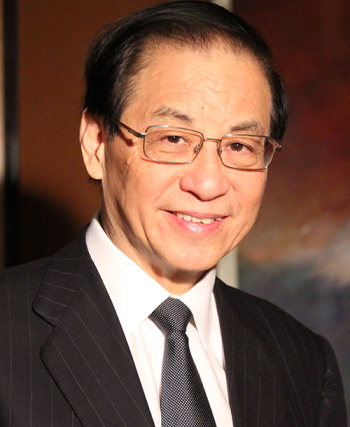
Mingkang Liu
Distinguished Fellow Asia Global Institute“What’s the character of Asia? One we all know is its higher population density, with 40 per cent of the world population living in Asia. If all that 40 per cent of the population rose to the status of a high-income country and want to live with consumption levels of the U.S., that would be dangerous for the world.”
“What China wants to reform is the governance of China itself. Changing to a development model is not possible without changing the way the economic system works. How is China going to achieve this objective? It’s recognized that without the reform these objectives can’t be achieved, so this is how China is going to introduce environmental protection, create a harmonious society and social cohesion.”
With 40 per cent. of the world’s population, Asia’s sustainability challenges are immense. Drawing from their experiences in Asia’s two most populous countries, the panelists discussed the particular challenges facing China and India
- Sustainability has as much to do with promoting a responsible outlook in Asia’s business leaders and consumers as it does in reforming policy.
- Two-thirds of India’s population lack access to sanitation which is important to basic development. The penetration of mobile phones far outstrips that of sanitary toilets. With more than 50 per cent. of India’s population relying on agriculture to grow and develop, the way India manages its local roots will clearly have a major influence on development.
- A push for improved infrastructure, particularly sanitation, and an educational policy that takes social issues into account are necessary for India’s sustainable development.
- In the past 30 years, China has experienced dramatic changes. The fastest change has been to consumption patterns. Beijing has a population of 20 million, with seven million cars, which contribute one-third of the capital’s air pollution. People want to drink Coca-Cola and drive German and Japanese cars.
- In China, the Third Plenum outlines real reforms, but progress will take time. For anyone hoping to advance the cause of sustainable development in China, the question is not how to benefit from the reforms, but how to further the proposed reforms.
- At a philosophical level, there needs to be a shift in employers’ mindset that an employee is no different from one’s child. This can be instilled over time. School children should be taught that wanting the lowest price as a consumer, the highest profit as an employer and highest return as an investor is not a system in equilibrium. If children can be taught to think holistically, the day will come when employees can be treated better. In the short term, employers need to be taught that well-treated employees are more loyal and productive.
Evolving Growth Models
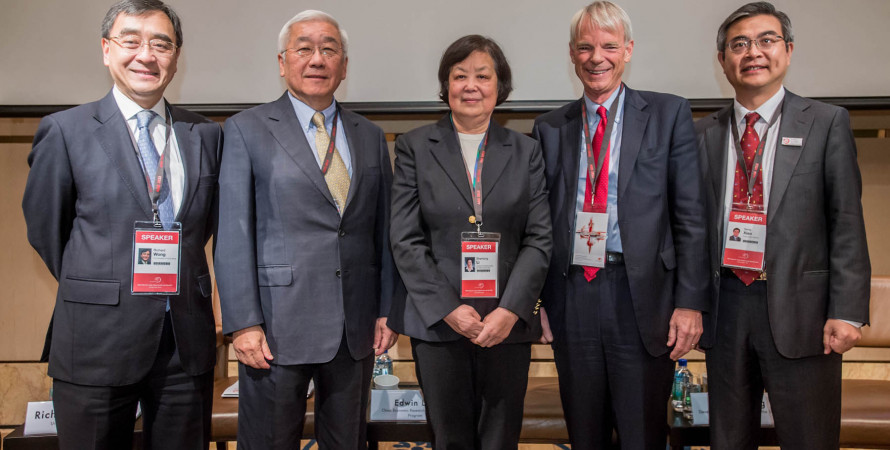
Parallel Breakout Sessions
The Foshan Story: A Chinese Lens on State and Market
Industrial powerhouse Foshan has important policy lessons for the rest of the country as China begins its transition to a more market-driven economy. As part of the Pearl River Delta (PRD), but lacking the advantages that came with Special Economic Zone status, Foshan could not develop itself along the prescribed track taken by its neighbors. In Foshan, the State has for decades assumed a support role for businesses, with more openness to experimentation in providing infrastructure and encouraging domestically-oriented enterprises. The result is an economy linked into 30 global markets, along with thousands of strong local brands. Today 60 per cent. of Foshan’s GDP is generated by private enterprise. However, Foshan’s sustainability challenges are mounting.
Escaping the Middle-Income Trap – Implications of the Foshan Experience
Foshan, a city of seven million in the Pearl River Delta, has a per capita GDP of US$14,828 – well above the World Bank’s high-income threshold of US$12,616 and even above Shanghai’s per capita GDP. This was achieved without being designated as a Special Economic Zone. The panel explored what enabled Foshan to achieve this growth, and how might this be applied to other Chinese cities. The strategy that brought China this far will no longer work. Foshan’s strength came from a shift of the State away from directing the market and towards a greater focus on governance. The panel noted that the trend must be extended across China if the country is to develop a competitive market in which innovation and high-value industries can grow.
China’s Latest Reforms – A New Growth Model
The Third Plenum of the 18th Party Congress outlined a greater role for the market in China’s economy. The ambitious reforms are destined to fundamentally remake China’s economic system. The panelists noted the influence of domestic departments and think-tanks on the document, which is a roadmap aimed at moving the economy to the high-income class. At the core, the market as the “decisive” factor in directing the economy. One panelist saw it as curtailing the influence of the government in the market, while another saw the introduction of the word “governance” to state actions as signaling a new emphasis on the rule of law.
Asia’s Sustainable Development
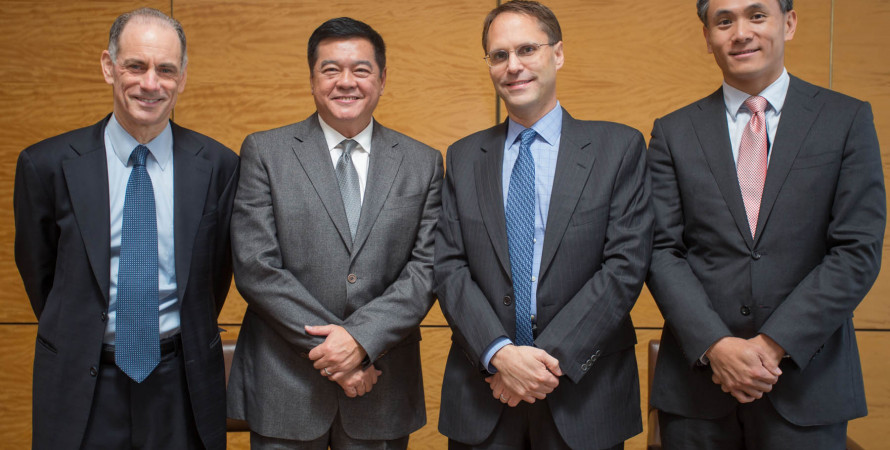 Parallel Breakout Sessions
Parallel Breakout SessionsRe-thinking Competitiveness, Economy and Environment
The past three decades of fast growth in much of Asia has had severe impact on the environment. Many now accept that protecting the environment and undoing much of the damage already caused is essential. The panel noted that environmental consciousness is growing, but not fast enough. “Others are not doing enough,” seems to be the common refrain. However, governments that have to provide services such as water, electricity and transportation with dwindling natural resources are realizing their responsibilities. Cooperation with all sectors has slowly begun, but there is a long way to go.
Re-thinking Growth and Social Development
Increasing inequality, advancements in technology and labour markets and demographic shifts are shining new light on issues of growth and inclusiveness. For developing Asia the concerns are especially acute, given the huge populations involved. Among the challenges are opportunities as well. The panel noted that there are several driving forces for companies doing business in the Asia-Pacific region today. Foremost are the economic headwinds as developing countries still largely depend on exports to advanced economies. Second, firms face ecological headwinds as the global requirements of protecting the environment get stricter. Third, there are headwinds of social inclusion: taking care of all the people without exception – has become an imperative for governments and businesses in general. Cambodian and Bangladeshi panelists provided ample examples to illustrate problems and prospects in their societies.
Kick-starting Asia’s Sustainable Future
Although policy and regulation can help promote sustainable growth in Asia, the private sector holds the keys for much of the financing, innovation, and implementation that will be required. The panel discussed how business leadership can help to accelerate the shift towards sustainable growth? Panelists dwelt on the successes and problems of companies that have made such efforts. The panel also noted that some companies in niche situations have succeeded in promoting sustainability while making decent profits. This rare combination might not apply across the board, but there are useful measures that all companies can adopt.
Asia Finance 2020
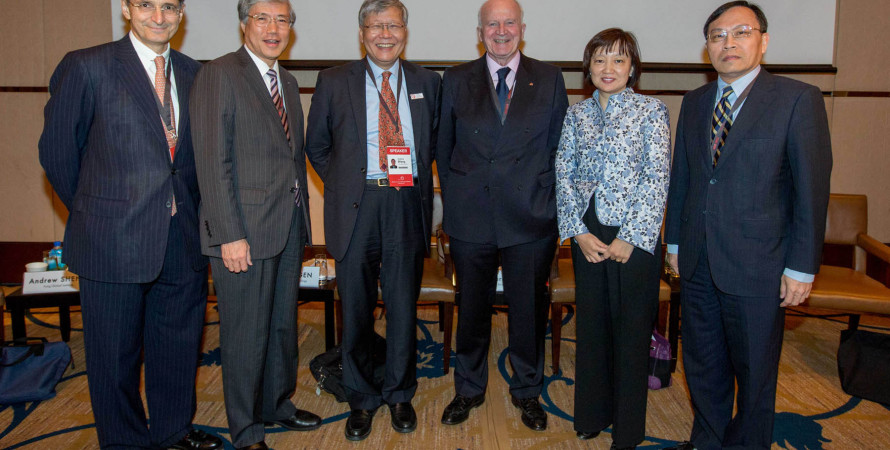
Below are highlights of the Parallel Sessons. Detailed reports from the Parallel Sessons can be found at www.asiaglobaldialogue.com
Intra-Asian Trade – The Renminbi Effect
The panel noted that Intra-Asian use of the Renminbi is growing in terms of value, lines of credit and settlements. Some 30 per cent. of Letters of Credit are now denominated in Renminbi. However, it is still a long way from becoming a fiat reserve currency – and not only because of China’s caution in pursuing full convertibility. Currently, there is a barely liquid Renminbi bond market, although the Third Plenum has set a goal of increasing the market dramatically. Currently, there is no way for institutional investors to effectively utilize their Renminbi holdings. More than 50 per cent. of mainland companies would give trading partners a discount if they could trade in Renminbi, but for the outside world there are still many challenges.
The Role of Long-Term Investors in Asia’s Growth
The panel noted that Asia has sufficient savings to finance its long-term development. However, there are very few viable investment vehicles to mobilize individual savings for long-term investment in Asia. Even in Japan, 56 per cent. of individual savings are in banks and six per cent. are in equities. Asian growth and long-term investment needs such as big infrastructure require big long-term institutional investment. The challenge is finding the way to channel these savings. The Australian model was cited as a possible example that Asia could emulate.
Asian Finance 2020 – The Search for a Blueprint
The panel noted that the Asian financial system must find new ways to foster innovation to break the region out of the role of assembler and exporter to the West. The financial system should concentrate on serving the real economy and encourage the development of small- and medium-sized enterprises (SMEs), which are nimbler and more open to innovation than bigger and older companies. The German Mittelstand – small- and medium-sized entrepreneurs – have shown the way, dominating Germany’s export market. Taiwan has successfully followed this model. China as outlined in the recent, Third Plenum, has identified SMEs as an important pillar of its economic reform.
Global Value Chains
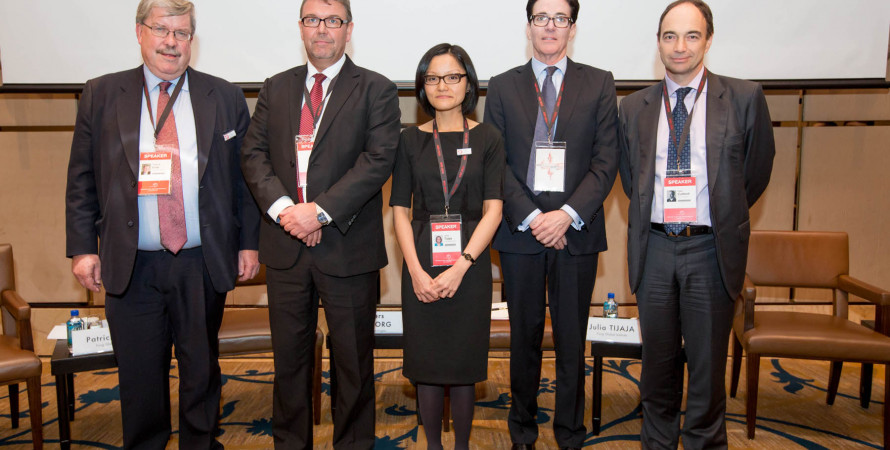
Parallel Breakout Sessions
Global Value Chains – Responding to Policy Risk
The panel noted that geo-politics, local politics and protectionist sentiment are influencing trade policy, which impact global value chains. Multilateralism is still the best way to ensure a level playing field for all. It allows developing economies to participate on an equal platform, as opposed to preferential trading agreements that often exclude smaller countries. It also continues to serve as a bedrock for the preferential arrangements. Efforts to improve the measurement of trade should continue to receive close attention so that policy decisions are based on more accurate information on trade, jobs and value creation.
Enabling Trade in a Changing World
The panel discussed how global value chains are affected by governments either through policy action or inaction, focusing on the impact of trade barriers such as tariffs, standards and border procedures on access to markets and value chain competitiveness. Panelists noted that unnecessary trade costs can arise as a result of policy design, interpretation and administration. It is in the interests of stakeholders to address these issues because the benefits of reducing trade barriers can be significant. Panelists agreed that reducing value chain barriers would significantly drive productivity and competitiveness.
The Risks and Rewards of Innovation
There is growing attention to the role of innovation in value chain operations. The panel noted that continuous innovation is imperative for value chain competitiveness. Sources of innovation vary along the value chain, involving both consumers and suppliers. Innovation space goes beyond manufacturing technology to include service-based innovation. An innovation-friendly business environment will generate more value and jobs. The digital age has further expanded and globalized innovation space, presenting new opportunities for participating in global value chains, particularly for young or small entrepreneurs.
Long Term Global Investment – A Changing Role for Families?
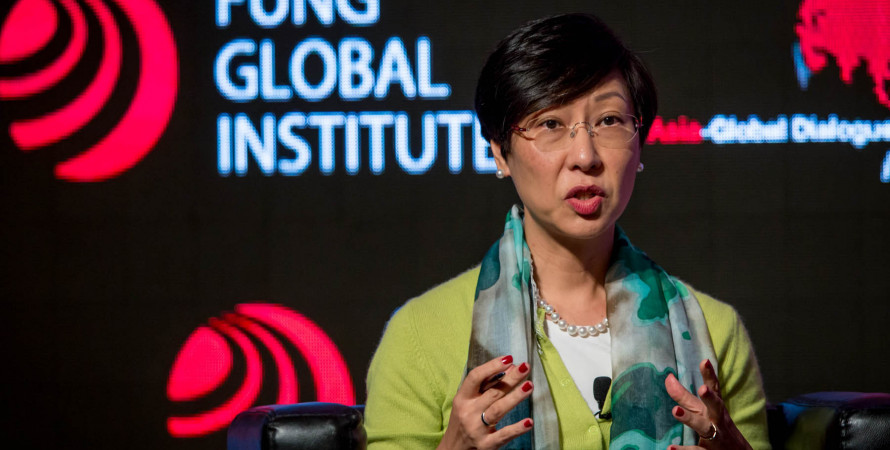
“If there is something that the family provides it is to bring along some sort of long-term purpose to what the company is trying to do. Of course, you can always have a debate on whether there are financial measures that would distribute more cash or reduce investment into certain areas. But that comes down to a difference of opinion on how to run the business. At least, in my book, it’s quite good to have this debate going on. From that point of view, a long-term shareholder can be of quite a bit of use to management.”
“Sometimes business is about a value alignment. There are situations where we have been approached by some fund houses not looking for families, as such, but looking for investors who have a value alignment with their investment thesis.”
Panelist explored the opportunities and challenges of building resilient and sustainable family business
- Many established family businesses believe they have a social responsibility.
- Family businesses also practice professional skills. The CEO of family companies do not think or work like public corporation CEOs. They can think long term rather than (only on) short term profit and turnover as they are not constantly under pressure to produce quarterly results or to maintain market.
- A study of 50 successful European family companies found common denominators. All are more than 50 years old, and two-thirds are over 100 years old. All are local enterprises, largely staying in the legacy businesses initiated by the founder. They tend to manage for the long term rather than worry about quarterly returns. In Europe, only 26 per cent. manage to hang onto the family fortune into the third generation.
- Nurturing committed, long-term, loyal staff, through several generations, is crucial. It is important for them to identify with the values of the family.
- Family businesses can and should manage for the long term but maintain a focus on quarterly results as well. It is a delicate balancing act. But short-term decisions should be taken to support long-term goals and not to hit quarterly marks.
- Well-managed family businesses pay close attention to their legacy industries. If family members are to stay involved in the business, they must be carefully evaluated and trained in the business’s philosophy. Generational conflicts should be minimized.
From Snake to Horse – Saddling Up for 2014
“Looking forward, technology is very, very important to growth and very, very important to productivity; but it takes a long time to understand and to yield. The biggest shift you’ve seen today in technology is in ‘Big Data’ - it has the potential to transform every element of business operations, every element of society and the very corporate model itself. But it takes a long time to learn - so you have to start now.”
“In the long term, what really matters is not 2014. What really matters on this globalizing planet is the next generation ... youth unemployment, rising inequalities, pressures on natural resources ... all these challenges are known but we don’t do too much. My recommendation is to use a model called ‘coalitions of the working’ adapted from the report Now for the Long Term (The Report of the Oxford Martin Commission for Future Generations), bringing together cities, big business and civil society for the road ahead.”
After a shaky start to 2013, the world is emerging from the Year of the Snake in a calmer state. Panelists discussed the outlook for the Year of the Horse
- As the global financial crisis was an “abnormal” balance-sheet recession, there will not be a “normal” recovery. But, mid-way through the “new normal”, there is light at the end of the tunnel. The US is slowly recovering; Asia and emerging economies have shown resilience and responsiveness to shocks and distortions, and Europe has held together despite fears to the contrary.
- No major structural reforms have been made to the global financial system post-2008, and the world has yet to find a way to address more pressing issues affecting growth, namely: inequality, distribution and the key challenge of job creation.
- The upward social mobility of the 1950s to 1970s is no longer happening – 93 per cent of income in the U.S. went to one per cent of the population in 2012. There is a risk of creating a stratified society in which the world’s real wages are not improving.
- In terms of growth in 2014, the key will be the demographics of Asia and, to a degree, Africa, which is showing promise because of vibrant business in many parts of the continent. These are the regions where there is middle-class expansion - and middle-class consumers demand a higher level of services.
- Other positive indicators in the Year of the Horse: there are fewer tensions in the Middle East and there is also a clearer road map for carbon pricing, leading up to the 2015 Climate Conference, which is good news for business as it will reduce uncertainty about this.
- Among the risks: hot money pouring into – or out of - emerging economies (depending on what the US Federal Reserve decides on “tapering”); quasi-deflation of the Euro, and tensions in the East China Sea, which would increase risk premium in Asia and could impact on development in the region.
Partnerships for the Future of Sustainable Growth
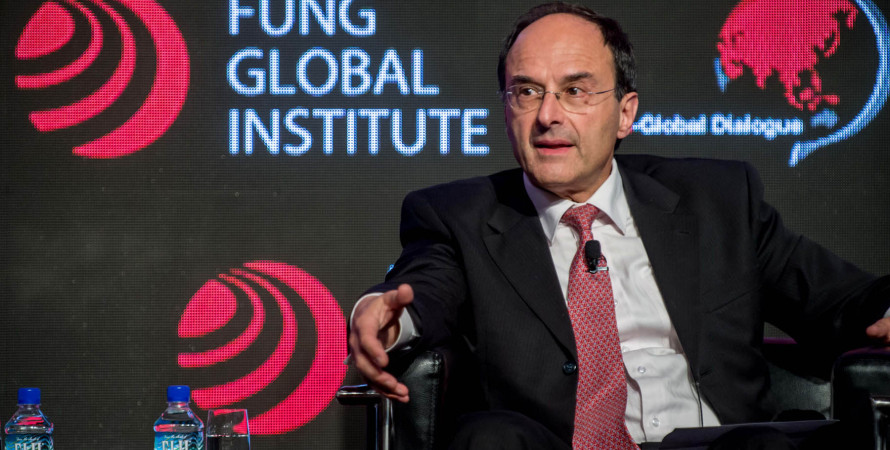 Isher Judge Ahluwalia
Isher Judge Ahluwalia
Isher Judge Ahluwalia
Chairperson, Board of Governors, Indian Council for Research on International Economic RelationsAndrew Sheng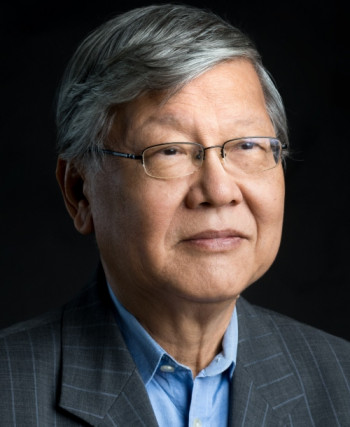
Andrew Sheng
Distinguished Fellow, Asia Global Institute“What is the key takeaway from the Asia-Global Dialogue 2013? The quality of the Asian speakers has been fantastic. There were disagreements between Asian speakers and everyone gave you straight talk ... I take to heart Stan Fischer’s advice, which was that if Asia is going to have a proper dialogue with the rest of the world we’ve got to do proper research and the FGI will do its best ... Asia can’t do it on its own. Exactly as Rahmi Koc said: If Istanbul is the bridge between the East and West, Europe and Asia, the Fung Global Institute will be the platform (for) that Asia-Global dialogue ...we need to have partnerships – and how do we take these ideas, the questions that have been put, and turn them into action?”
“In this region we have not forgotten that ‘face-to-face’ actually matters and that there’s no substitute for looking each other in the eye and mingling… and exchanging ideas – we cannot underestimate the importance of that…. Capacities to analyze are increasing everywhere, universities are better around the world and think-tanks are better around the world. So there’s room for networks of think tanks – and as think-tanks are good at lecturing governments and businesses on co-operation and so on I think we should do that.. We’ve made a start here.”
“In China, now is the best time for a think-tank to give suggestions and to work on policy issues … here we discussed the (Communist Party’s) Third Plenum meeting and resolutions. We know that suggestions came from government think-tanks, universities and NGOs – the total number came in its thousands to create the items of the reform plan … President Xi Jinping is trying to promote think-tanks to take part in the process for China’s reform.”
This final panel comprising leaders of established think-tanks from around the world discussed how business and policymakers need to adjust their focus to benefit growth and re-balance the economy. Asia must become the bridge to the global dialogue on the future of sustainable growth
- The role of the World Trade Organization will be crucial to the success of globalization of trade.
- Cities are the major areas of future socioeconomic growth as well as research and innovation. Only through innovation can Asia escape the middle-income trap.
- In the past, governments tried to provide a good business environment and companies would maximize profit. But in the changing situation, companies must do more, including working for sustainable development. In future there will have to be constant interaction between government, business and civil society on the challenges of education, healthcare and economic growth.
- The Bretton Woods system designed at the end of World War II served us well for over half a century. Statesmen of that era took care of the world’s political order and economists and business people were given appropriate roles for their fields of expertise. A large middle class came into being. The system worked well until the recession that began in 2007. The credit squeeze and mortgage crisis in the West spread into the global macroeconomic crisis. Rampant unemployment was coupled with stark income inequality.
- In times of societal crisis, rules are broken with impunity – even those responsible for enforcement break the rules. It is not easy to create enforceable rules for major crises. So today the plight of the middle class – what used be called the working man – has become an urgent social and political issue for societies. In this situation, networks of professionals will have to connect with the dispossessed and think-tanks will have to connect more with youth.
- The effect of the global economic crisis on China has not been drastic because its financial and trading systems are not yet fully integrated with the rest of the world. China’s leaders have made economic reform their prime concern. Ideas for reform have come from the Communist Party, government, universities and NGOs. Chinese President Xi Jinping is an active promoter of improving China’s think-tanks, and consultations with thought leaders are set to be a regular process.
- There are markets and there are markets – for commodities, money, debt, housing and so on. But not all markets are the same. It is important that the “creative destruction” inherent in the capitalist market system should be better understood by all. It is equally important that markets should be used by human beings as tools for the good of society. Governments, the private sector and civil society will need to cooperate to bring about better education and healthcare for the future.
In Conversation with Marcus Wallenberg
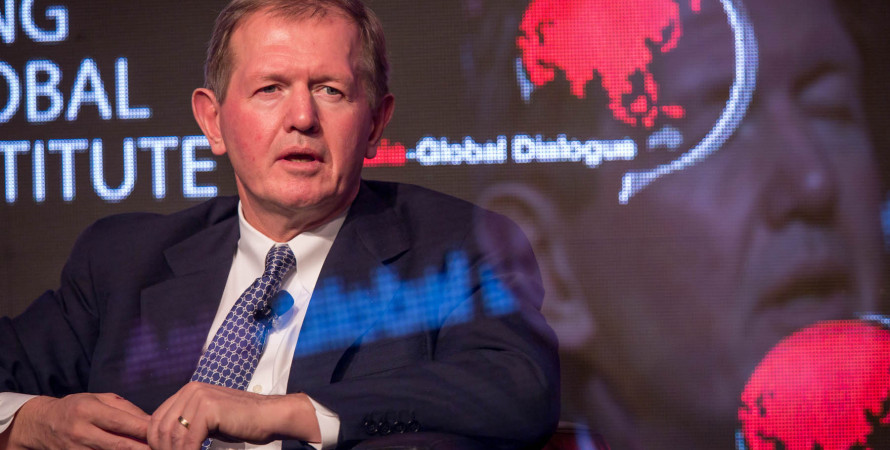 Marcus Wallenberg
Marcus Wallenberg
Marcus Wallenberg
Chairman, Skandinaviska Enskilda Banken (SEB)“In Europe, we are in a fragile recovery; Northern Europe is relatively stable while Southern Europe is bouncing on the floor… this fragile situation is substantially better on the economic side…”
“On Asia and China, the big question to ask in business in Northern Europe is how to get out here quick enough and how to do this in order to sustain growth over a long time.”
“As to the Wallenberg family, we are not short-term people; we have an extremely long-term view…. one of the businesses we have an interest in we have been with since the late 1800s; we stay with them because with the long-term view we get more valuable business over time.;”Keynote Dinner Dialogue: Marcus Wallenberg shared his thoughts on Europe’s view of Asia and China, innovation and family business
- The European Union still serves an important role for Europe, and the Euro has been a success in many ways, but it is facing challenges and Europe is undergoing a fragile recovery. Some southern European countries have made substantial changes in the face of the EU’s challenges, and this should be recognized.
- For European business, Asia is the great opportunity. There is uncertainty about the direction being taken in China, though many political questions have been answered. Many observers are confident of China’s ability to consume. ASEAN represents a fantastic business opportunity, but protectionism is one of the biggest challenges of our time.
- A company cannot shift its base entirely, but it needs to move toward the market. Ericsson, for example, looks at innovation constantly and spreads (it) around in order to innovate close to the market.
- The key to carrying on a family-run business is to ensure that family members are passionate about it. Otherwise, it is difficult to carry the family value system to the next generation. There is no business that is so good that it cannot be destroyed by a bad CEO. Conversely, there is no business that is so bad that it cannot be saved by a good CEO.
Sponsors
Diamond Sponsor

Platinum Sponsor

Gold Sponsors


